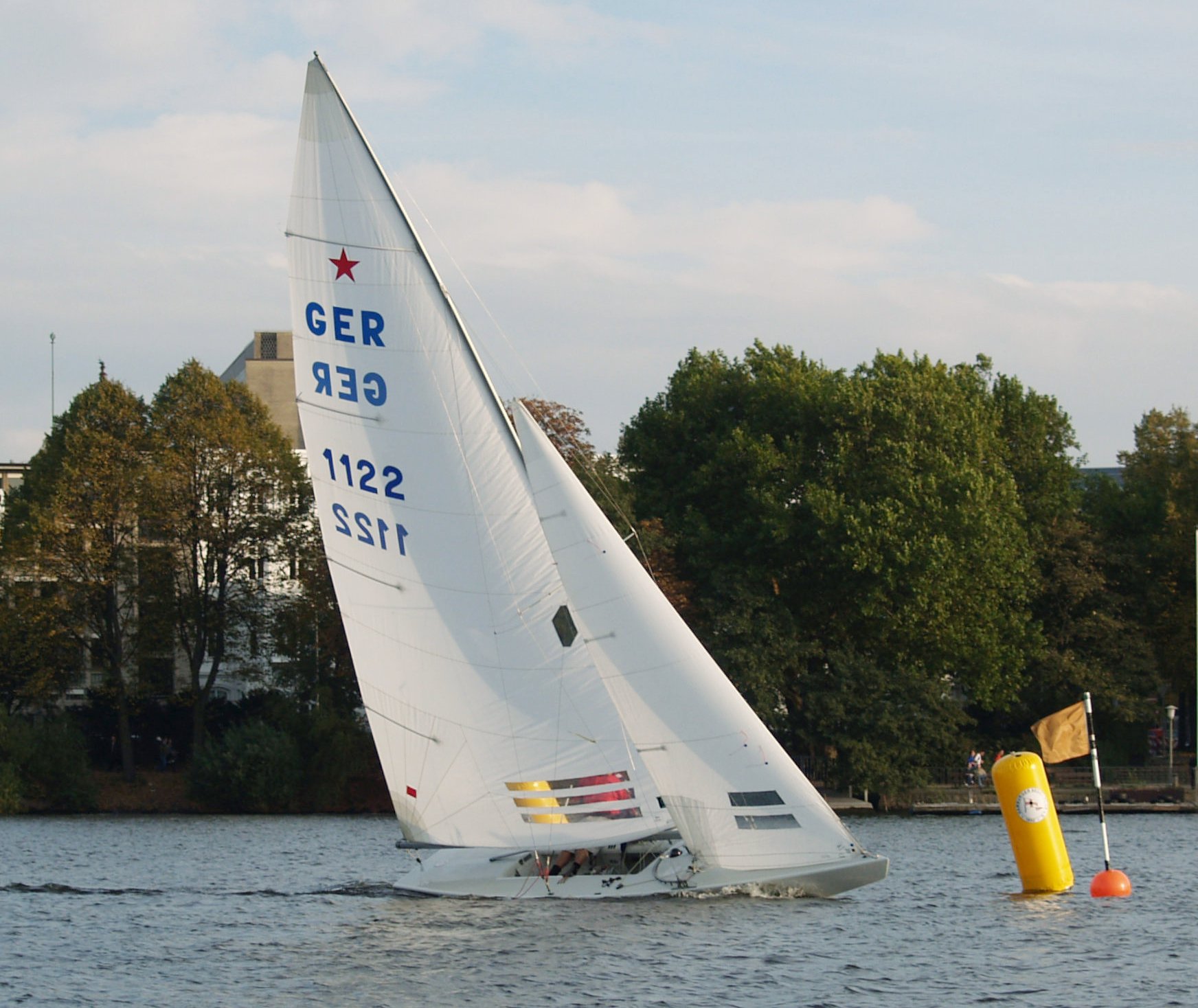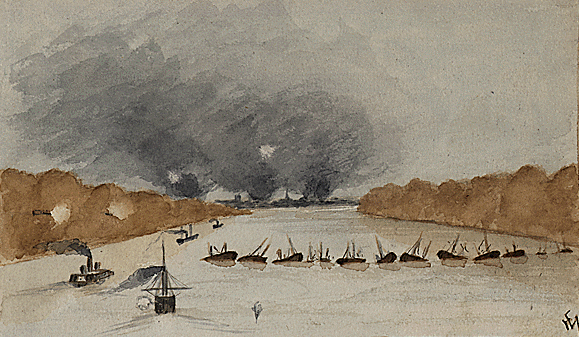|
Clark Boat Company
The Clark Boat Company was an American boat builder based in Kent, Washington. The company specialized in the design and manufacture of fiberglass sailboats. The company was founded by Bob Clark in 1960 and continued in business until 1984. History The first design produced was the Lightning (dinghy), Lightning, a racing dinghy. The company was one of the first to produce this boat design in fiberglass. The company went on to produce the OK (dinghy), OK, 505 (dinghy), 505 and Thistle (dinghy), Thistle dinghies, as well as the Star (keelboat), Star keelboat. Star production began with the building of the Fiberglass molding, mold plug by Olympic Star class sailing gold medalist, William Earl Buchan. Later, the molds went sent back to Buchan at the end of production. The company employed many members of Bob Clark's family. Son Dennis started his own sail manufacturing business in 1971, the ''Clark Sails Loft''. Dennis Clark was also a one design champion in several boat classe ... [...More Info...] [...Related Items...] OR: [Wikipedia] [Google] [Baidu] |
Privately Held Company
A privately held company (or simply a private company) is a company whose shares and related rights or obligations are not offered for public subscription or publicly negotiated in the respective listed markets, but rather the company's stock is offered, owned, traded, exchanged privately, or Over-the-counter (finance), over-the-counter. In the case of a closed corporation, there are a relatively small number of shareholders or company members. Related terms are closely-held corporation, unquoted company, and unlisted company. Though less visible than their public company, publicly traded counterparts, private companies have major importance in the world's economy. In 2008, the 441 list of largest private non-governmental companies by revenue, largest private companies in the United States accounted for ($1.8 trillion) in revenues and employed 6.2 million people, according to ''Forbes''. In 2005, using a substantially smaller pool size (22.7%) for comparison, the 339 companies on ... [...More Info...] [...Related Items...] OR: [Wikipedia] [Google] [Baidu] |
William Earl Buchan
William Earl Buchan (born May 9, 1935) is an American sailor and Olympic Champion. He competed at the 1984 Summer Olympics in Los Angeles and won a gold medal in the Star class with Steven Erickson. He sailed on '' Intrepid'' in the 1974 America's Cup defender trials. Biography Buchan was born on May 9, 1935 in Seattle, Washington. He was the son of Bill Buchan Sr. He won ten medals at Star World Championships (from 1961 to 1985), including three golds. His son William Carl Buchan won a gold medal in the Flying Dutchman class at the 1984 Olympics. Buchan was inducted into the National Sailing Hall of Fame The National Sailing Hall of Fame is a nonprofit educational organization that promotes sailing and racing by recognizing individuals who have contributed to the sport, highlighting sailing's contribution to the American culture; and demonstrating ... in 2013. See also * Star World Championships - Multiple medallist References External links * * * 1935 b ... [...More Info...] [...Related Items...] OR: [Wikipedia] [Google] [Baidu] |
1/2 Ton
Half Ton class was an offshore sailing class of the International Offshore Rule racing the Half Ton Cup between 1967 and 1993. History In order that yachts of different types can race against each other, there are handicap rules which are applied to differect boat designs. The Half Ton Class was created by the Offshore Racing Council for boats within the racing band not exceeding 22'-0". The ORC decided that the rule should "....permit the development of seaworthy offshore racing yachts...The Council will endeavour to protect the majority of the existing IOR fleet from rapid obsolescence caused by ....developments which produce increased performance without corresponding changes in ratings..." When first introduced the IOR rule was perfectly adequate for rating boats in existence at that time. However yacht designers naturally examined the rule to seize upon any advantage they could find, the most noticeable of which has been a reduction in displacement and a return to frac ... [...More Info...] [...Related Items...] OR: [Wikipedia] [Google] [Baidu] |
International Offshore Rule
The International Offshore Rule (IOR) was a measurement rule for racing sailboats. The IOR evolved from the Cruising Club of America (CCA) rule for racer/cruisers and the Royal Ocean Racing Club (RORC) rule. Rule context - past and present rating systems The IOR was superseded (in the early 1990s) by the International Measurement System, International Measurement System (IMS) and CHS (since renamed IRC (sailing), IRC). While some IOR yachts race at club level under IRC in more or less their original form, others had major surgery to make them competitive within the new rules. Rule components The IOR concentrated on Hull (watercraft), hull shape with length, beam, Freeboard (nautical), freeboard and girth measurements, foretriangle, Mast (sailing), mast and Boom (sailing), boom measurements, and stability with an inclination test. Additionally, the IOR identified features which were dangerous, or it couldn't fairly rate, and penalized or prohibited them. The measurements and penalti ... [...More Info...] [...Related Items...] OR: [Wikipedia] [Google] [Baidu] |
San Juan 24
The San Juan 24 is an American trailerable sailboat that was designed by Bruce Kirby as an International Offshore Rule Quarter Ton class racer.Henkel, Steve: ''The Sailor's Book of Small Cruising Sailboats'', page 261. International Marine/McGraw-Hill, 2010. The design was later developed into the more cruising-oriented San Juan 23 in 1975. Production The design was built by the Clark Boat Company in Kent, Washington, United States, starting in 1973 but it is now out of production. A total of 1200 examples of the design were built. Design The San Juan 24 is a recreational keelboat, built predominantly of fiberglass, with wood trim. It has a masthead sloop rig, a raked stem, a raised reverse transom, an internally-mounted spade-type rudder controlled by a tiller and a fixed fin keel. It displaces and carries of lead ballast. The boat has a draft of with the standard keel fitted and is normally fitted with a small outboard motor for docking and maneuvering. The desi ... [...More Info...] [...Related Items...] OR: [Wikipedia] [Google] [Baidu] |
Laser (dinghy)
The Laser is a class of single-handed, one-design sailing dinghies using a common hull design with three interchangeable rigs of different sail areas, appropriate to a given combination of wind strength and crew weight. Bruce Kirby designed the Laser in 1970 with an emphasis on simplicity and performance. The Laser is a widely produced class of dinghies. As of 2018, there were more than 215,000 boats worldwide. It is an international class with sailors in 120 countries, and an Olympic class since 1996. Its wide acceptance is attributable to its robust construction, simple rig and ease of sailing that offer competitive racing due to tight class association controls which eliminate differences in hull, sails, and equipment. The International Laser Class Association (ILCA) defines the specifications and competition rules for the boat, which is officially referred to as the ILCA Dinghy, due to a trademark dispute. Other "Laser"-branded boats of related designs include the Las ... [...More Info...] [...Related Items...] OR: [Wikipedia] [Google] [Baidu] |
Bruce Kirby (yachts)
Bruce Robert William Kirby, (2 February 1929 – 19 July 2021) was a Canadian-born sailboat designer, dinghy and offshore racer and journalist. His designs spanned in size from the single-handed Laser dinghy to the 12-meter class Louis Vuitton Cup yacht, '' Canada One''. He continued his design work in his American company, Bruce Kirby Marine. Career Kirby was born in Ottawa. A Canadian newspaperman and former editor of ''Yacht Racing'' (predecessor to '' Sailing World''), he designed the Laser in 1969. Kirby started as a reporter in Montreal before editing ''Yacht Racing'' and, in his spare time, taking up yacht design and drawing the Laser. In 1970 Kirby became editor of ''Yacht Racing'', where he stayed until 1975. Kirby's career began with the International 14 class, a developmental skiff with relatively few rules. Kirby designed several International 14s, winning the world championships in 1958 and 1961. Kirby also represented Canada at the Olympic regattas in 1956 and 196 ... [...More Info...] [...Related Items...] OR: [Wikipedia] [Google] [Baidu] |
New Bern, North Carolina
New Bern, formerly called Newbern, is a city in Craven County, North Carolina, United States. As of the 2010 census it had a population of 29,524, which had risen to an estimated 29,994 as of 2019. It is the county seat of Craven County and the principal city of the New Bern Metropolitan Statistical Area. It is located at the confluence of the Neuse and the Trent rivers, near the North Carolina coast. It lies east of Raleigh, north of Wilmington, and south of Norfolk. New Bern is the birthplace of Pepsi. New Bern was founded in October 1710 by the Palatines and Swiss under the leadership of Christoph von Graffenried. The new colonists named their settlement after Bern, the Swiss region from which many of the colonists and their patron had emigrated. The flag and arms of the American city are virtually identical to those of the Swiss canton. The English connection with Switzerland had been established by some Marian exiles who sought refuge in Protestant parts of ... [...More Info...] [...Related Items...] OR: [Wikipedia] [Google] [Baidu] |
San Juan Islands
The San Juan Islands are an archipelago in the Pacific Northwest of the United States between the U.S. state of Washington and Vancouver Island, British Columbia, Canada. The San Juan Islands are part of Washington state, and form the core of San Juan County. In the archipelago, four islands are accessible to vehicular and foot traffic via the Washington State Ferries system.San Juan Islands Route Map , Washington State Ferries 
History [...More Info...] [...Related Items...] OR: [Wikipedia] [Google] [Baidu] |
San Juan 21
The San Juan 21 is an American trailerable sailboat, that was designed by Don Clark as a cruiser- racer and first built in 1970.Henkel, Steve: ''The Sailor's Book of Small Cruising Sailboats'', pages 129-130. International Marine/ McGraw-Hill, 2010. Production The design was built by the Clark Boat Company in Kent, Washington, United States, as well as eventually opening a facility in New Bern, North Carolina, but it is now out of production. A total of 2600 San Juan 21s were completed having been raced in the Washington state area as part of Seattle based Fleet 1 for multiple decades. The design was introduced at the 1970 Seattle Boat Show and was well received. Design The San Juan 21 is a recreational keelboat, built predominantly of fiberglass with a balsa-cored cabin and port transom, with wood trim. It has a fractional sloop rig, a raked stem, a slightly reverse transom, a transom-hung rudder controlled by a tiller and a centerboard keel. The boat has a dra ... [...More Info...] [...Related Items...] OR: [Wikipedia] [Google] [Baidu] |
Naval Architecture
Naval architecture, or naval engineering, is an engineering discipline incorporating elements of mechanical, electrical, electronic, software and safety engineering as applied to the engineering design process, shipbuilding, maintenance, and operation of marine vessels and structures. Naval architecture involves basic and applied research, design, development, design evaluation (classification) and calculations during all stages of the life of a marine vehicle. Preliminary design of the vessel, its detailed design, construction, trials, operation and maintenance, launching and dry-docking are the main activities involved. Ship design calculations are also required for ships being modified (by means of conversion, rebuilding, modernization, or repair). Naval architecture also involves formulation of safety regulations and damage-control rules and the approval and certification of ship designs to meet statutory and non-statutory requirements. Main subjects The word "vessel" ... [...More Info...] [...Related Items...] OR: [Wikipedia] [Google] [Baidu] |




